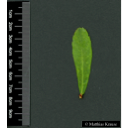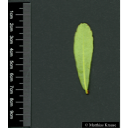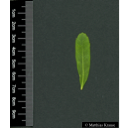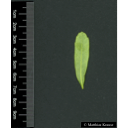Useful information about the taxon (species, subspecies, variety...)
Myrica gale L. 1753
Myricaceae
(APG IV)bog myrtle, sweetgale
Taxon concept: The Plant List (2010)
Distribution: Europe: all regions without Balkan and Apennine Peninsula
Size: 0,5 - 2,5 (m)
Flowering period: IV - V
Myrica gale L. - Accepted: Myrica gale L. bei Zander 2008; Familie: Myricaceae (Zander 2008)Myrica gale L. - Accepted: Myrica gale L. bei The Plant List (2010); Familie: Myricaceae (APG III)Myrica gale L. - Accepted: Myrica gale L. bei The Plant List (2014), version 1.1; Familie: Myricaceae (APG III)Myrica gale L. - Accepted: Myrica gale L. bei The Plant List (2014), version 1.1; Familie: Myricaceae (APG IV)Myrica gale L. - Accepted: Myrica gale L. bei BfN Checklist Flora DE; Familie: Myricaceae (APG IV)
- Color of flower
- male flowers greenish, female flowers brownish
- Flowers
- dioecious; flowers of male and female plants in catkins
- Flower ecology
- wind-pollinated (anemophilous)
- Life form
- shrub
- Leaves
- oblanceolate, alternate, with yellow resin glands
- Foliage persistence
- deciduous
- Fruits
- drupe
- Fruit ecology
- bird-dispersed (ornithochorous, endozoochorous)
- Soil conditions
- preferentially on moist to wet, mainly acid, well-aerated soils
- Natural occurrence (habitat)
- wet heathlands, bog margins, willow swamps
- Comment to ecology
- root symbiosis with nitrogen-fixing actinomycetes
- Vegetation typ and synecology (plant community)
- character species of the Myricetum (within Salicion cinereae); also in Molinia-Myrica communities
- Constraints according moisture
- tolerant of waterlogging
- Chemical characters
- leaves contain myricetin and other flavonoids
- Chemical and pharmaceutical usage – short
- "myrtle tree"; leaves as a tea and coction; against respiratory ailments and skin complaints
- Hildegard von Bingen
- "myrtle tree"; leaves as a tea and coction; against respiratory ailments and skin complaints
- Usage
- the aromatic leaves and fruits are used as condiment and flavour enhancer for soups and other meals ("piment royal"), formerly also used for flavouring beer; from the dried leaves a good tasting tea can be made; the leaves are an effective insect repellent
eFloras (2008): Flora of China. Published on the Internet http://www.efloras.org.; Elvin, M. & Liu, C. (1998): Man's Impact on the Vegetation and Landscape in the inner Himalaya and Tibet. In: Sediments of Time: Environment and Society in Chinese History. Illustrierte Neuauflage. Cambridge University Press, Cambridge, UK: p. 65. 9780521563819.; Erhardt, W., Götz, E., Bödeker, N. & Seybold, S. (2008): Der große Zander. Enzyklopädie der Pflanzennamen. Band 2. Arten und Sorten. Eugen Ulmer KG, Stuttgart (Hohenheim), 18. Aufl., 2103 S.; Franiel, I. & Blocka, A. (2008): The Seeds Quality of Betula pendula Roth and Betula oscura Kotula from Semi-Natural and Anthropogenic Habitats. Pakistan Journal of Biological Sciences, 11: 1455-1460.. DOI: 10.3923/pjbs.2008.1455.1460; The IUCN Red List of Threatened Species. www.iucnredlist.org;
Diese Webseite verwendet Google Maps, um Karten und Standorte von Pflanzen in den Hohenheimer Gärten anzuzeigen. Dadurch werden unter Umständen Daten an Google weitergeleitet, was mit einer Verarbeitung Ihrer personenbezogenen Daten verbunden sein kann. Die Datenschutzerklärung von Google finden Sie hier: Datenschutzerklärung von Google
| Sex | Standort | Accession number | Planting year | Donation | IPEN | Lat. | Long. |
|---|---|---|---|---|---|---|---|
| Diverse Krankheiten | HvB-4062 | XX-0-HOH-HvB-4062 | 48,70902027 | 9,21204891 |




